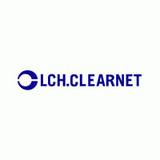International clearing house LCH Clearnet has produced its end of year figures for the entirety of 2012, considering the year as having been a period of significant operational and strategic progress.
Of most notable significance is the substantial increase in headline operating profit which showed an 89% increase during 2012 representing a fiscal figure of €127.5 million.
Additionally, net revenue increased by 24% to €426.2 million, and the acquisition of International Derivatives Clearing Group (IDCG) from Nasdaq in August 2012 was a major event of the year enabling LCH to provide a platform for accelerated expansion of US multi-asset clearing offer.

With regard to the overall performance during the year, Group Chief Executive Ian Axe said:
“Last year saw unprecedented stress in European sovereign debt markets and extensive global financial regulatory reforms covering CCPs."
"LCH.Clearnet came through for clients and regulators demonstrating once again our effectiveness within the global capital markets Risk Management framework. A €127.5 million profit is sound evidence of how we strengthened our financial stability and is proof of our longevity."
"We also achieved a number of important milestones in our strategic development, including reinforcing our leading market position in Europe by growing our OTC businesses and extending our horizontal exchange model, as well as investing in the US and Asia. We are in a strong position to leverage further our strengths as the leading multi-asset class, multi-venue clearer.”
Serving major international exchanges and platforms as well as a range of OTC markets the company clears a broad range of asset classes including: securities, exchange traded derivatives, commodities, energy, freight, foreign exchange derivatives, interest rate swaps, CDS and euro and sterling denominated bonds and repos as well as working closely with market participants and exchanges to identify and develop clearing services for new asset classes.
Role of a Clearing House
A clearing house sits in the middle of a trade, assuming the counterparty risk involved when two parties (or members) trade.
When the trade is registered with a clearing house, it becomes the legal counterparty to the trade, ensuring the financial performance; if one of the parties fail the clearing house steps in.
By assuming the counterparty risk, the clearing house underpins many important financial markets, facilitating trading and increasing confidence within the market.
Initial and variation margin (or collateral) is collected from clearing members. Should they fail, this margin is used to fulfill their obligations.
The amount of margin is decided by the clearing house’s risk management teams, who assess a member’s positions and market risk on a daily basis.
Both the soundness of the risk management approach and the resilience of its systems have been proven in recent times.
LCH.Clearnet is regulated or overseen by the national securities regulator and/or central bank in each jurisdiction from which it operates.
2012 Results In Detail:
Strategic and operational highlights
- Demonstrated, in unprecedented market Volatility , its value as a key participant in the global capital markets risk management framework
- Strengthened position as leading OTC clearing house with SwapClear passing $339.9 trillion notional cleared; ForexClear cleared notional of more than $440 billion in 2012 following March launch; CDSClear extended to include international model
- RepoClear cleared over €142.4 trillion nominal
- Continental European cash equity and listed derivative clearing arrangements with NYSE extended
- Revised terms for London Stock Exchange (LSEG) offer for a majority stake provisionally agreed in December
- Acquisition of International Derivatives Clearing Group (IDCG) from Nasdaq in August 2012 to provide platform for accelerated expansion of US multi-asset clearing offer
Financial highlights
- Net revenues increased by 24% to €426.2 million
- Headline operating profit grew by 89% to €127.5 million
- Clearing fees increased 7% to €253.9 million
- Net underlying investment income was €132.3 million, down 5%, while average cash and collateral under management rose 13% to €83.6 billion
- Unrealised net investment gain and net other income including rebates of €40.0 million
- Operating costs controlled at €298.7 million
- Tier 1 ratio of 40% and total capital ratio of 46%










